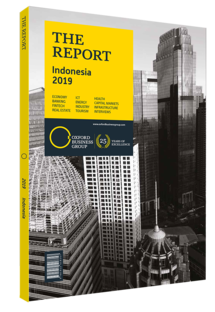A series of setbacks in 2018 proved unable to slow tourism growth in Indonesia
Faced with the prospect of a severe recession from weaker oil and metals prices and falling export revenue, the government of President Joko Widodo launched an ambitious five-year strategic plan in 2015.
The initiative to promote tourism in the archipelago, also known as the Strategic Plan of the Ministry of Tourism (MoT) 2015-19, entailed an overhaul of relevant government ministries, branding, budgeting and strategy. It addressed foreign visas, airport infrastructure, Cabinet composition and the long-held assumption that the future of tourism depends on Bali.
New Image
One of the first acts of the newly elected government in 2014 was to earmark tourism as a national priority and create a new MoT, replacing the Ministry of Tourism and Creative Economy (MTCE). Under the past administration, the MTCE was a junior ministry that handled everything from tourism to films to arts. In comparison, the new MoT is aided by a trained civil service and tasked solely with revamping and executing the country’s tourism strategy.
This heightened emphasis on travel and tourism gave the body a budget equal to 9% of the national total in 2017. Financing the ongoing Wonderful Indonesia campaign, which was first launched in 2011, is a large component of the funds, as it seeks to highlight the country’s nature, culture, people and food through various marketing activities abroad.
Emerging Destinations
The five-year plan aimed to develop tourism into one of the country’s top-three foreign exchange earners. Historically, Indonesia has had currency and foreign reserve issues as the government tended to favour protectionist policies, especially for manufacturing. Attracting foreign tourists is viewed as a straightforward way to secure foreign currency while generating minimal local opposition.
Under the programme, Indonesia moved beyond its traditional strategy of developing Bali as the main tourism attraction. Instead, alternative destinations were prioritised under the 10 New Balis initiative, launched in 2016, and have benefitted from promotions, infrastructure investment, training and foreign investor incentives. Recent moves to increase foreign investment include loosening regulations to allow for full ownership of certain businesses and waiving visas for citizens of 169 countries.
At the core of the 10 New Balis strategy is differentiation from regional peers Thailand, Vietnam and Malaysia by emphasising Indonesia’s multitude of ecological and historical destinations. These include Borobudur, one of the world’s most renowned Buddhist sites; Komodo Island, home of the famed Komodo dragons; and Lake Toba in North Sumatra. One of the challenges to promoting these destinations, however, is that they are located hours apart in a country where domestic flights are sometimes expensive, making it difficult for tourists who wants to hit multiple sites of the archipelago in one holiday.
Setbacks
While 2018 saw a record of 15.8m tourist arrivals, a string of unfortunate events highlighted the country’s need to upgrade its safety measures. For example, the early warning system introduced after the 2004 tsunami had fallen into disrepair and failed to warn the inhabitants of Tanjung Lesung of a tsunami that claimed over 100 lives after the Anak Krakatoa volcano erupted in late 2018. Tanjung Lesung is one of the destinations included in the 10 New Balis initiative. That year also saw a deadly ferry accident on Lake Toba – another New Bali destination – and the Lion Air crash in Jakarta. The beaches of Bali and Java have also become the focus of much attention due to a large amount of plastic waste onshore and in the water.
Despite the disasters of 2018 and international calls for the country to clean up its waters, the expansion of Indonesia’s tourism industry remains robust. Although some targets were missed under the five-year plan, like the goal of 17m arrivals in 2018, concrete gains over the timespan led it to be viewed as a success, with continued growth expected in the years ahead.
You have reached the limit of premium articles you can view for free.
Choose from the options below to purchase print or digital editions of our Reports. You can also purchase a website subscription giving you unlimited access to all of our Reports online for 12 months.
If you have already purchased this Report or have a website subscription, please login to continue.

